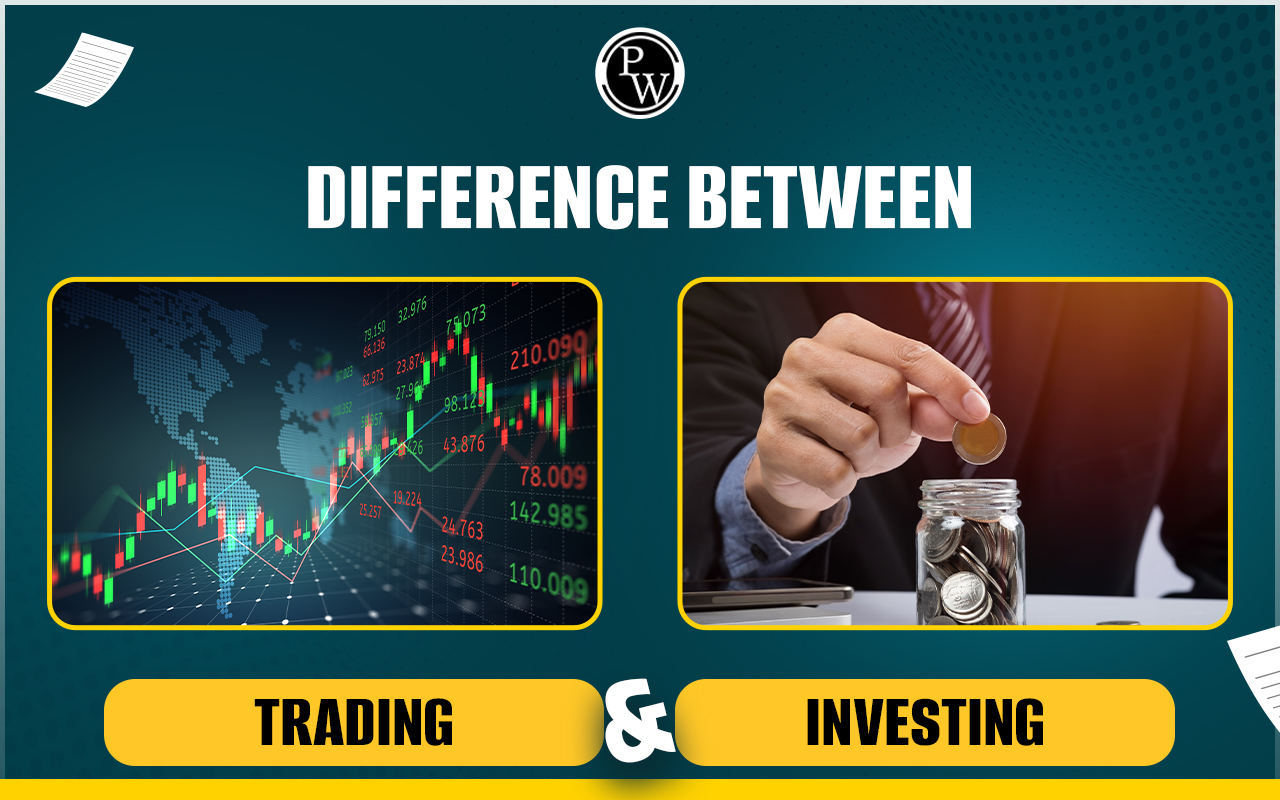

Trading and Investing : There are two main strategies in finance - trading and investing. Although both involve buying and selling financial assets, they have different objectives, timeframes, and approaches. It is important to understand the differences between trading and investing, especially if you want to navigate the complexities of the financial markets and achieve your financial goals effectively.
This article lets you understand the major differences between trading and investing, highlighting their distinct characteristics, purposes, and methodologies. By exploring these disparities, readers will gain valuable insights into which approach aligns best with their financial objectives, risk tolerance, and time horizon. Whether aiming for short-term gains or long-term wealth accumulation, discerning the disparities between trading and investing is essential for informed decision-making in the dynamic world of finance.
What is Investing?
Investing involves purchasing and holding stocks for an extended period to earn additional income or profits. It is like setting aside money to get a good return in the future. Investors can steadily grow their wealth by building a diversified portfolio that includes stocks, bonds, mutual funds, and other investment instruments.
Long-term investors typically seek out stocks with strong fundamentals indicating potential growth over the long haul. The key principle behind stock investing is believing in the future growth and success of the companies you invest in. To make wise investment decisions, investors conduct a thorough fundamental analysis of companies, assessing their financial stability, past performance, management team, and the overall industry and market conditions. This careful analysis guides investors in choosing which stocks to add to their portfolios for long-term growth and stability.
What is Trading?
Trading involves the buying and selling of securities such as stocks, derivatives, or bonds to profit from short-term price movements. It is a dynamic and ongoing process that necessitates regular analysis and adjustment of strategies based on market conditions. Unlike long-term stock investing, which focuses on accumulating wealth over time, trading seeks to exploit immediate market fluctuations for financial gain.
In stock trading , individuals, referred to as traders, actively purchase and sell financial instruments, often taking advantage of stock prices' volatility. The primary objective of stock trading is to utilise short-term market trends and movements to execute swift and frequent transactions, aiming to buy at low prices and sell at high prices or even sell at high prices and repurchase at lower prices (short-selling).
Similarities For Trading and Investing
Both trading and investing are strategies employed within the realm of finance to generate profits from financial markets. While their approaches, objectives, and timeframes differ, they share the overarching goal of capitalising on opportunities in the market to achieve financial growth. Now, let's check the similarities and differences between trading and investing .
- Financial Markets : Both trading and investing occur within the framework of financial markets , where individuals buy and sell various financial assets such as stocks, bonds, and commodities.
- The objective of Profit : The ultimate goal of trading and investing is generating profit. While traders seek to profit from short-term price fluctuations, investors aim to build wealth over the long term through asset appreciation and dividends.
- Risk Management : Both activities require some degree of risk management . Traders and investors must assess and manage the risks associated with their positions, whether market volatility, economic uncertainty, or company-specific factors.
- Analysis : Although the methods differ, trading and investing involve some analysis. Traders often perform technical analysis, focusing on market trends and price movements, while investors conduct fundamental analysis, assessing companies' financial health and growth potential.
- Decision-Making : Whether trading or investing, individuals must make informed decisions based on their analysis, market conditions, and risk tolerance. Both require discipline, patience, and a strategic approach to decision-making .
Also Read: Privatisation: Meaning, Objectives, Methods, Advantage, Example
Difference Between Trading and Investing
Before delving into the specifics, let's check the fundamental disparities between trading and investing . While both activities involve the exchange of financial assets, they diverge significantly in their objectives, timeframes, and strategies. Understanding these variances is essential for individuals navigating the financial markets, enabling them to discern which approach best suits their goals and risk tolerance. Let's explore the key differences between trading and investing in detail.
| Between Trading and Investing | ||
| Goals | Trading | Investing |
| Goal | Traders try to make money by quickly buying stocks when they're cheap and selling them when the price goes up, all within a short time. Their main aim is to grow their money over time by making profits from changes in stock prices and dividends. | The main aim is to make money over time by watching the value of stocks rise and collecting dividends. |
| Focus | Traders pay close attention to short-term changes in the market, aiming to enter and exit at the right times using technical signals. | Investors focus on companies' long-term performance, examining major trends and economic factors. |
| Period of Investment | Trading, on the other hand, is short-term and akin to a sprint. Traders capitalise on price changes in the market, making quick moves to profit from fluctuations. They may buy and sell stocks within hours or days, adapting swiftly to market conditions. | Investing involves holding onto investments for the long term, akin to a marathon, where patience is key. Investors endure market fluctuations and aim for steady growth over years or decades. |
| Effort Involved | Trading, however, involves a lot of analysis, especially technical analysis where traders study charts and patterns in share prices. They also need to make solid strategies to avoid losses because trading can be risky due to the leverage used. | Investing is quite easygoing, as investors typically hold onto their investments for a long time without needing to do much regularly. |
| Range | Short-term, typically spanning from a few hours to a couple of daysLong-term, often extending over several years or even a decade | Long-term, often years or decade |
| Style of Analysis | Trading necessitates technical analysis, focusing on market trends and price patterns to inform trading decisions. | Investing entails conducting fundamental analysis, which involves assessing company financials, balance sheets, key ratios, and their growth potential over time. |
Begin your journey towards academic excellence in Commerce with our comprehensive Class 11 Commerce courses . Master the CBSE syllabus with expert guidance and ace your exams. Enroll now!”
Difference Between Trading and Investing FAQs
Which is better investing or trading?
How do beginners start investing in trading?
What is the difference Between Investment and Trading?












